Pressures on our atmosphere and climate

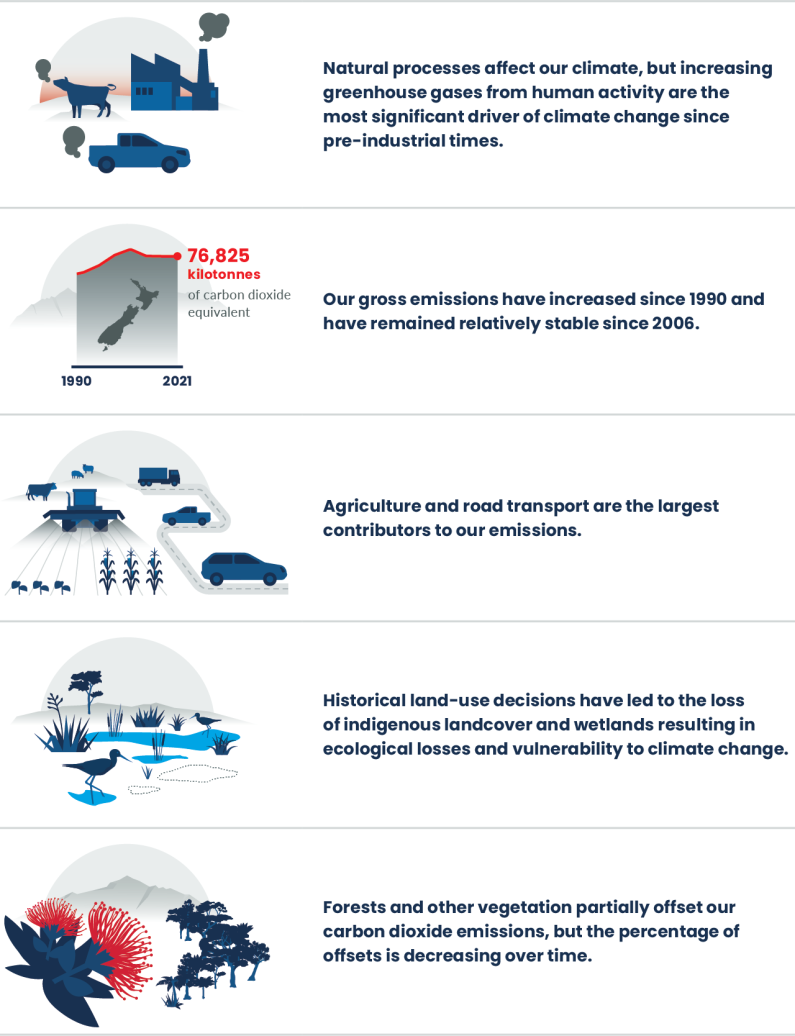
Ngā pēhanga ki te taiao
Greenhouse gas emissions from human activities are accumulating in the atmosphere and are the most significant driver of climate change since pre-industrial times. Natural influences, such as climate oscillations, can also lead to climate fluctuations. However, by increasing the amount of greenhouse gases in the atmosphere, humans are having a profound impact on our climate.
Our domestic greenhouse gas emissions contribute to this global picture. Nearly half of our emissions come from agriculture, mainly methane from farm animals. Our energy sector is the second largest contributor, mainly carbon dioxide resulting from the combustion of fossil fuels for various purposes, like driving, air travel, manufacturing and coal-fired electricity generation. Although a significant portion of our electricity comes from clean, renewable sources, we still supplement it with coal and gas generation. Furthermore, we are heavily reliant on fossil fuels for transportation energy.
Trees and other vegetation partially offset some carbon dioxide emissions, although this is diminishing over time. Historical land-use decisions have led to the loss of indigenous land cover (with over half of the total land area modified for agriculture, forestry and housing) and wetlands (where only around 10 per cent of historic wetlands remain). This loss reduces their capacity to absorb carbon and support nature’s contribution to people, such as promoting ecological processes, mitigating flooding and landslides, and reducing erosion. The removal of this natural infrastructure not only results in ecological losses but also reduces climate resilience. As long as Aotearoa New Zealand’s net emissions (total emissions plus any emissions added or removed by the land use, land-use change and forestry sector) are greater than zero, we are contributing to further climate change.
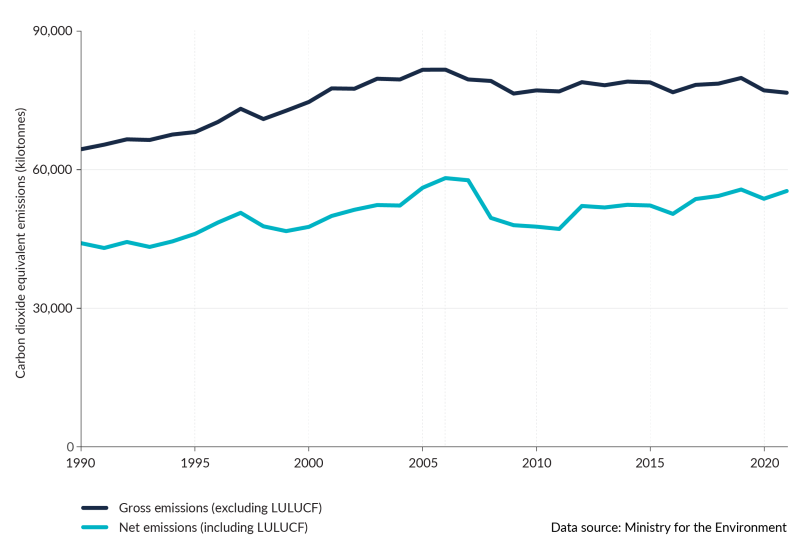
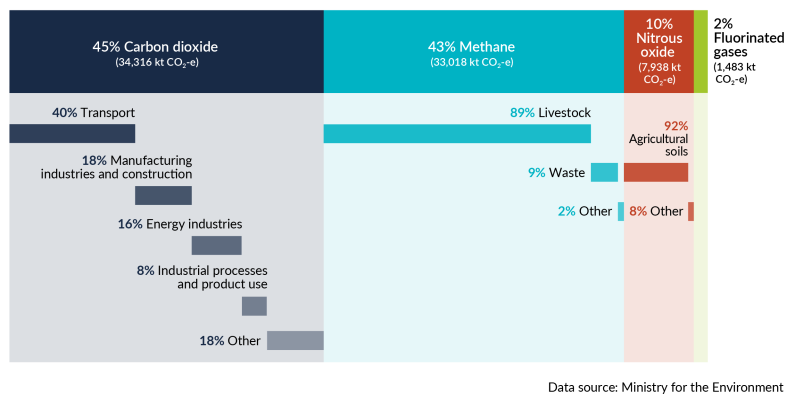
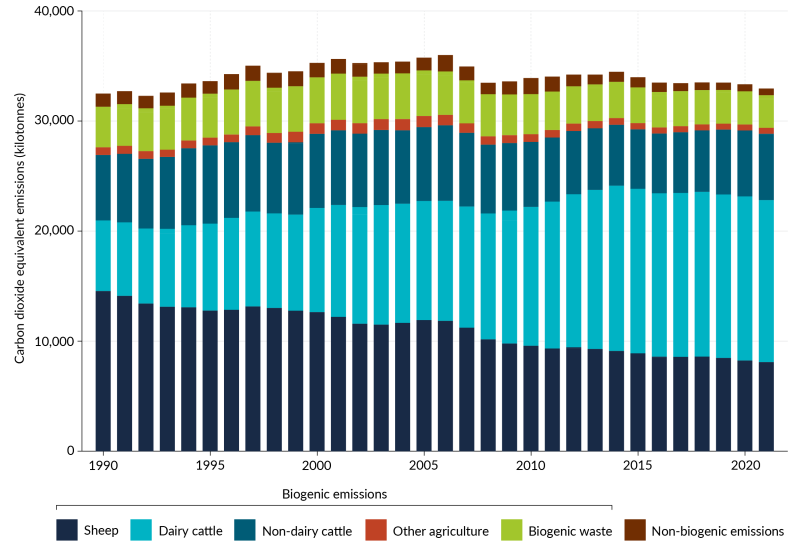
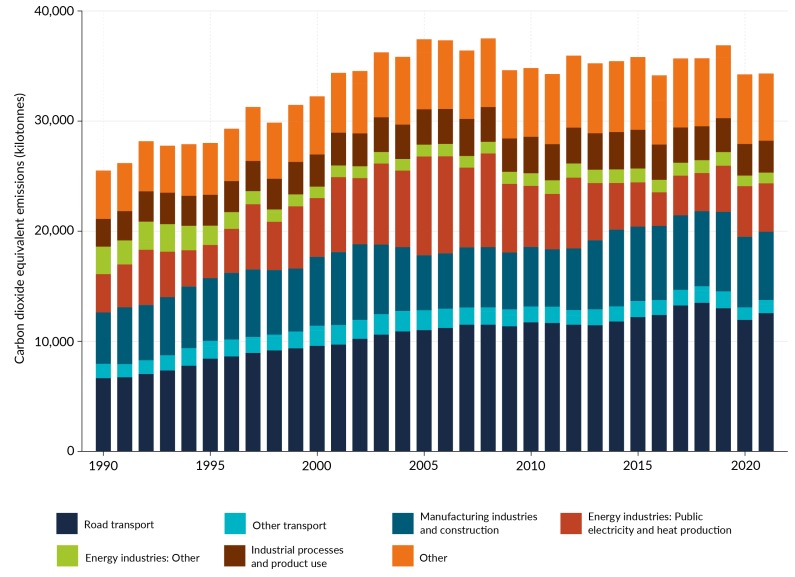

Pressures on our atmosphere and climate
November 2023
© Ministry for the Environment